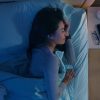As electronic manufacturers are listening to doctor’s concerns about the harmful effects of overexposure to blue light, do they hit the mark with features such as Apple’s Night Shift?
Apple’s latest feature, Night Shift, uses geolocation and sunset time data to reduce the amount of blue light your device emits. However, the result isn’t a technical reduction in blue light, but rather a filtered amber version.
Medical professionals have been prescribing and touting the benefit of blue-light reducing apps for several years. It just so happens that Apple finally listened to their science-driven crowd that wanted a solution to absorbing bright light well into the evening hours.
Scientists believe that overexposure to these harmful blue light rays can confuse and alter our body’s natural circadian rhythms. This means that over time, our bodies will lose track of when it’s time to sleep and wake up. The scientific theory surrounding circadian rhythms is that our bodies take these cues from our environment – which happens to be blue light. A reduction in blue light triggers the body to produce more melatonin, which gradually lulls into a restful sleep.
While it’s a significant step in the right direction, Apple’s feature doesn’t efficiently block all blue light. While any reduction in the intensity or duration of blue light is helpful, it’s important that people look to other means to protect their baby blues.
Here’s what you can do to protect yourself:
- Invest in a pair of BluTech Lenses, which helps block harmful blue rays.
- Limit the amount of time you are exposed to blue light, especially before bedtime.
- Avoid the urge to take your electronic devices into the bedroom, as any exposure can alter your circadian rhythms.




